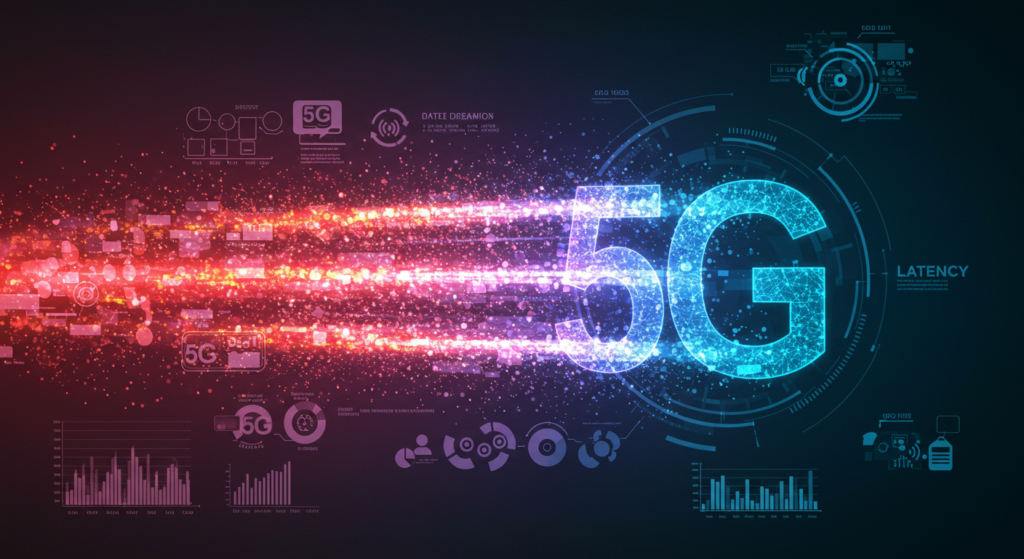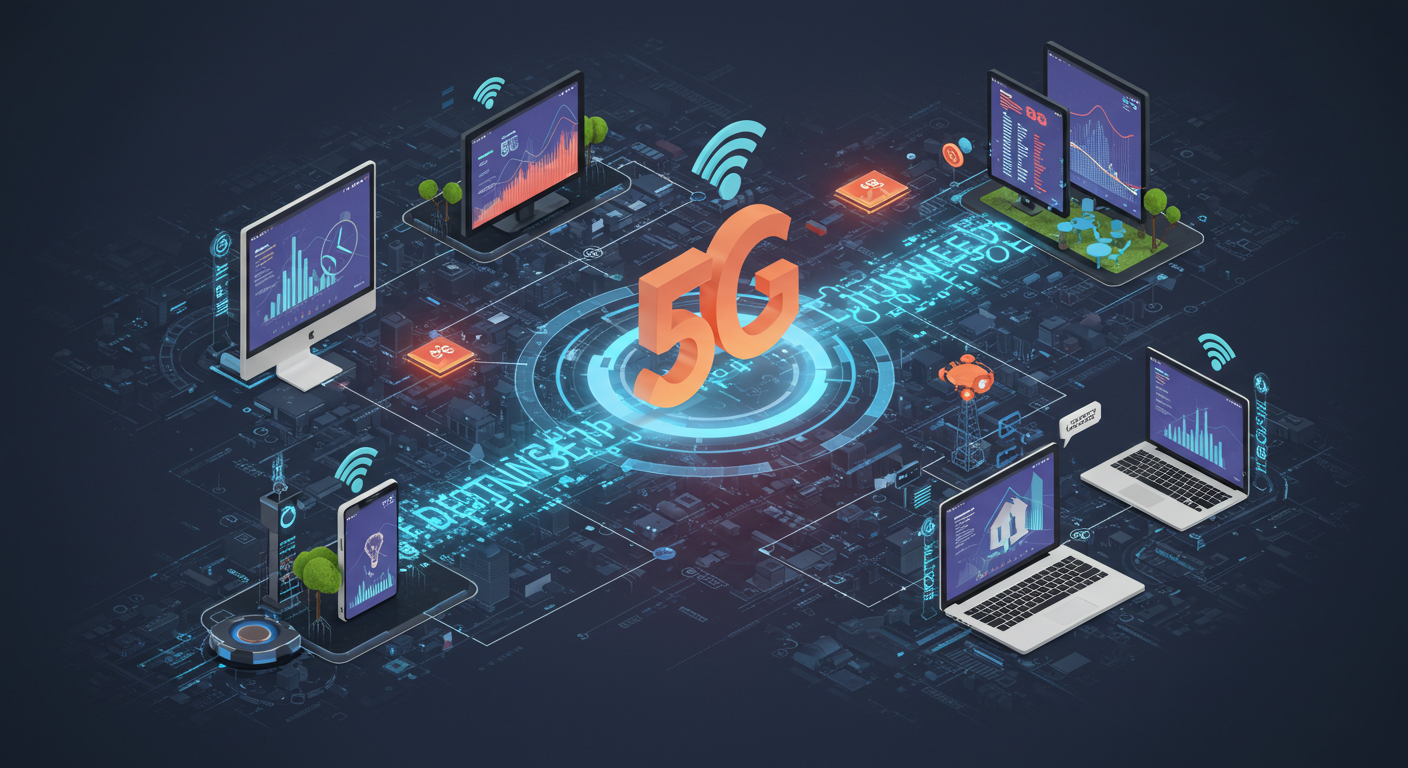5G speed performance is influenced by several core factors: spectrum availability, network infrastructure, device compatibility, and environmental conditions. For example, access to high-frequency millimeter waves can unlock incredible speeds, but signal range and building interference can reduce performance. Network congestion, latency, and even weather conditions also play a role in shaping the real-world experience.
This is where Quantacom, the leading mobile telecom provider in Australia, steps in. By investing in advanced infrastructure, optimizing network deployment, and ensuring wide coverage across urban and regional areas, Quantacom is at the forefront of delivering 5G connectivity that matches both business and personal demands.
What is 5G Speed and Why Does It Matter?
5G speed represents the fifth generation of mobile connectivity, offering faster data transfer rates, reduced latency, and a capacity to support millions of devices simultaneously. Unlike 4G LTE, 5G enables near-instantaneous downloads, real-time video streaming, and seamless cloud integration for businesses.

For everyday consumers, this means smooth ultra-HD streaming, lag-free gaming, and dependable video calls. For enterprises, particularly those using cloud-based PBX phone systems or IoT solutions, 5G is a catalyst for digital transformation.
Key Factors Influencing 5G Speed Performance
Given are the factors to consider for influencing 5G speed performance:
Spectrum and Frequency Bands
The backbone of 5G performance lies in its spectrum. Low-band spectrum ensures wide coverage but at slower speeds, while high-band millimeter waves unlock gigabit speeds over shorter distances. Mid-band offers a balance between both, making it the most common choice for Australian telecom operators.
Network Infrastructure
The density and placement of 5G towers and small cells directly affect speed. A city with well-distributed 5G nodes experiences smoother connectivity compared to rural areas where coverage gaps remain. Quantacom addresses this by continuously upgrading its infrastructure to support consistent performance.
Device Compatibility
Not all smartphones and IoT devices are created equal. The ability of your device to harness the full potential of 5G depends on modem quality, antenna design, and software optimization.
Network Congestion and Latency
Even with advanced technology, too many users on the same cell tower can slow down speeds. 5G reduces latency to single-digit milliseconds, but consistent performance requires careful load balancing—an area where Quantacom’s managed IT and network services excel.
5G Speed vs 4G LTE: The Real Difference
While 4G LTE offered average download speeds of 30-60 Mbps, 5G can reach several gigabits per second under optimal conditions. Upload speeds also see dramatic improvements, enabling faster content sharing and cloud-based collaboration.
For businesses, this means faster file transfers, stronger support for remote teams, and a more resilient digital environment. Quantacom leverages this difference to deliver cloud-hosted solutions, VoIP integration, and enterprise-grade connectivity.
The Role of 5G in Business Communications
5G is more than faster internet; it is a foundation for the next era of communication systems. Cloud-based PBX phone systems, internet failover solutions, and unified communications thrive on stable, low-latency networks.
With Quantacom’s expertise in telecommunications, Australian businesses are equipped with scalable and secure solutions that harness the true potential of 5G. This is especially critical for industries such as healthcare, finance, and logistics where real-time connectivity drives operational success.
How 5G Speed Enhances Everyday Life
- Entertainment: Stream 4K and 8K videos without buffering.
- Gaming: Experience real-time online multiplayer with negligible lag.
- Smart Cities: Support IoT sensors for traffic management, security, and energy efficiency.
- Remote Work: Enjoy crystal-clear video calls and instant file sharing.
Quantacom ensures these benefits extend across Australia, giving both metro and regional users a consistent 5G experience.
Challenges That Still Affect 5G Speed
Despite the promise of 5G, challenges remain. Spectrum licensing, infrastructure costs, device availability, and cybersecurity concerns can slow adoption. Environmental obstacles such as building density or rural remoteness also pose hurdles. Quantacom is actively addressing these issues by expanding partnerships with equipment providers and offering innovative managed solutions to close the gap.
Conclusion
5G speed is more than just a technological upgrade, it is a transformative force for businesses, industries, and everyday life. Its performance depends on spectrum, infrastructure, devices, and network management. With Quantacom leading the charge in Australia’s telecommunications sector, businesses and consumers alike can experience the full power of 5G without compromise.
FAQs
Q1. What is the average 5G speed in Australia?
The average 5G speed in Australia ranges from 150 Mbps to over 1 Gbps, depending on location, device, and network conditions.
Q2. Why is my 5G speed slower than expected?
Speeds can be affected by network congestion, distance from the nearest tower, and device compatibility.
Q3. How is 5G different from 4G in business applications?
5G provides ultra-low latency, faster uploads and downloads, and the ability to support a larger number of connected devices ideal for cloud-hosted PBX and enterprise IT solutions.
Q4. Can rural areas access 5G in Australia?
Coverage is expanding. Quantacom is actively working to extend 5G networks into regional and rural communities to bridge the digital divide.
Q5. Is 5G secure for businesses?
Yes, 5G offers advanced encryption and security protocols, but network management and IT services from providers like Quantacom ensure maximum protection.
